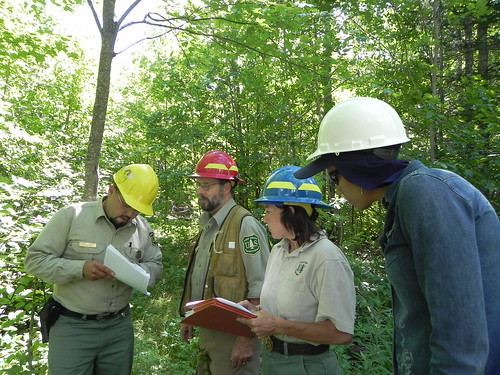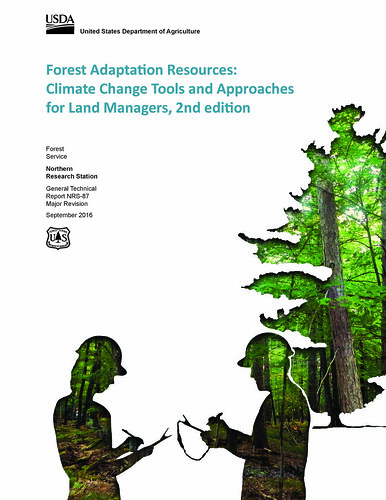
Changes in climate and extreme weather are already increasing challenges for forest ecosystems across the world. Many impacts are expected to remain into the future. This means forest managers, conservationists and woodland owners continually need to address climate change to ensure forests can provide a broad array of benefits and services. The USDA Northern Forests Climate Hub and the U.S. Forest Service provide tools to help address this need.
Collaboration between scientists and managers resulted in the publication Forest Adaptation Resources: Climate Change Tools and Approaches for Land Managers. This publication provides a suite of materials enabling land managers to consider the likely effects of climate change and increase the ability of forests to cope with climate change impacts.
The toolkit was originally developed in 2012 by the Northern Institute of Applied Climate Science and partners as part of a pilot adaptation effort in northern Wisconsin entitled the Climate Change Response Framework (CCRF). As the CCRF has expanded in the intervening years, the toolkit has been used by hundreds of land managers and natural resource professionals across the Midwest and Northeast to integrate climate change into planning and decision-making. Today, nearly 200 Adaptation Demonstrations provide examples of how one part of the toolkit, the Adaptation Workbook, has been used in real-world forest conservation and management projects.

A second edition of the toolkit was recently released by the Northern Institute of Applied Climate Science and U.S. Forest Service Northern Research Station. The newly expanded guide serves the entire Midwest and Northeast and contains several additional resources for vulnerability assessment and adaptation including:
- a brief guide to help forest managers judge or initiate vulnerability assessments,
- two “menus” of adaptation strategies and approaches that are directly relevant to natural urban forests of the Northeast and Midwest,
- step-by-step instructions to assist land managers in developing and implementing on-the-ground climate adaptation actions, and
- summaries of five real-world adaptation demonstrations showing how these resources have been used to develop adaptation tactics.
When it comes to climate change adaptation, one of the most common questions is, “What should I be doing to address climate change in my forest?”
In reality, there is no single answer for responding to climate change. Every forest is different and needs customized solutions to address the unique needs of any individual landowner and piece of land. Forest Adaptation Resources: Climate Change Tools and Approaches for Land Managers provides a robust toolkit to help those working in forests develop their own solutions.
You can download a pdf or order a printed copy of the document from the Forest Service website.

